Daily life in Ancient Egypt was rooted in harmony, religion, and innovation. Egyptians viewed life as sacred, with society structured in a clear hierarchy from pharaohs to farmers. Family and tradition guided daily roles, while women enjoyed notable rights. The Nile sustained agriculture, trade, and spiritual beliefs. Egyptians wore linen, lived in mudbrick homes, and ate a simple diet of bread, beer, and vegetables. Entertainment included festivals, games, and music. Education was reserved for elites, particularly scribes. Religion shaped every aspect of life, including burial practices and justice, which was upheld through Ma’at. The civilization also pioneered advancements in medicine, astronomy, and technology—laying the foundations of one of history’s most enduring cultures.

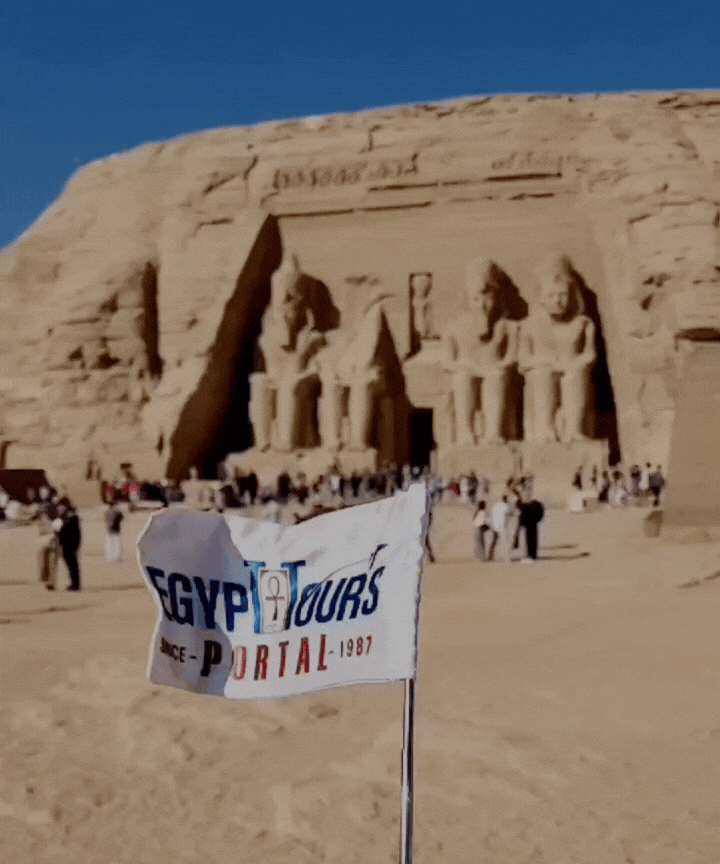
The ancient Egyptians loved life as we're blessed with ideal conditions like very fertile land and a beautiful climate. They considered their life to be perfect, to the point that they believed that their afterlife was the eternal continuation of life on earth. Daily life in ancient Egypt was focused on enjoying every single moment of time they had and making it as memorable as possible. Through their observation of the harmony and the balance of the universe, they were encouraged to live in the same way to achieve peace and happiness with themselves and others.
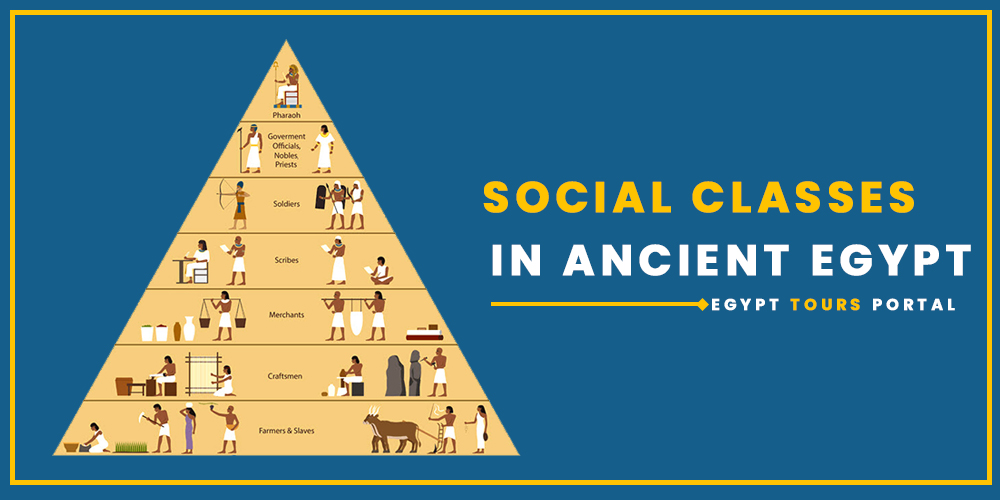
The population of Egypt was divided into social classes in the shape of social pyramids based on their profession and role in society. At the top of the pyramids were the king and queen who were the god’s chosen people and their royal family who enjoyed an unimaginable amount of status, wealth, and luxury. Second to the top is the educated professional class, like the doctors, accountants, priests, and scribes who were believed to be chosen by the god Thoth of wisdom and knowledge.
Then comes the working class of ancient Egypt, like the sailors, the craftspeople, and soldiers who played a key role in providing and protecting life in Egypt. In the lower class were the servants and the farmers who worked in the lands owned by the king; they were the ones who produced the goods that helped the entire culture to thrive and were the necessary labor force for the construction of the pyramids and other monuments of Egypt. All of the jobs and position in society was passed down from father to son.
Discover the social structure of the ancient Egyptian civilization
Read More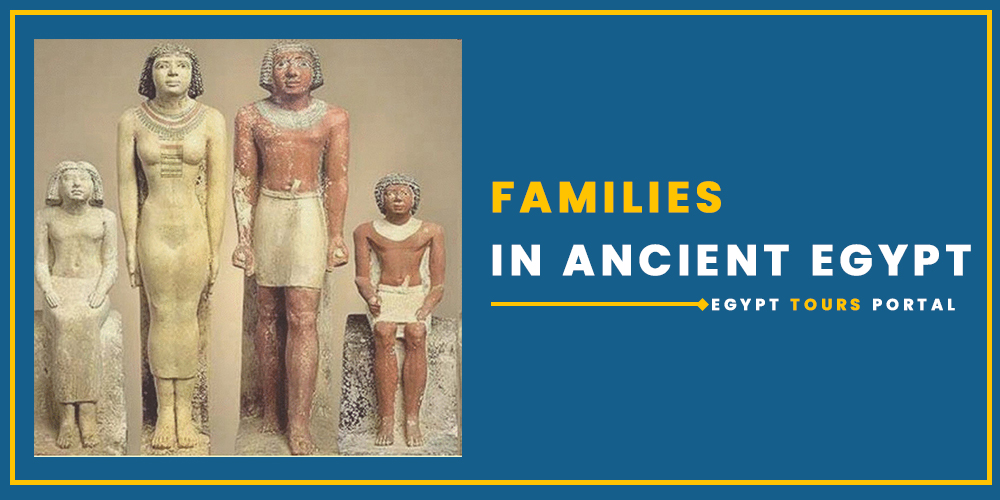
The concept of family was very important during life in ancient Egypt. Most of the marriages in Egypt were arranged by the parents; girls were usually married around the age of 12 and boys at the age of 15. Girls would stay at home and learn from their mothers, while the boys would train in the profession of their fathers and uncles. Also, most marriages were polygamous with the husband having several wives; one of the wives was considered a chief wife who was higher than the other ones.
Divorce also existed in life in ancient Egypt but it was highly rare because the Egyptians were committed to the sanctity of family unity. An unmarried man was seen to be incomplete and boys were advised to marry as soon as possible. The structure of the family is very simple as the wife is the mistress of the house who looks after all the household, and the husband works outside the home to earn enough money to provide for his family.
Learn about the magnificent traditions and customs of the ancient Egyptian civilization
Read More
Women in life in Ancient Egypt were often treated as equal to men, as they were allowed to own property, conduct business dealings just like men, and even testify in court. Some women were able to rule Egypt like Cleopatra, Hatshepsut, and others. Women could obtain high-ranking jobs like administrators, supervisors, and priestesses. But their main responsibility was to be a wife, a mother, and the caretaker of the home and the children above all else.
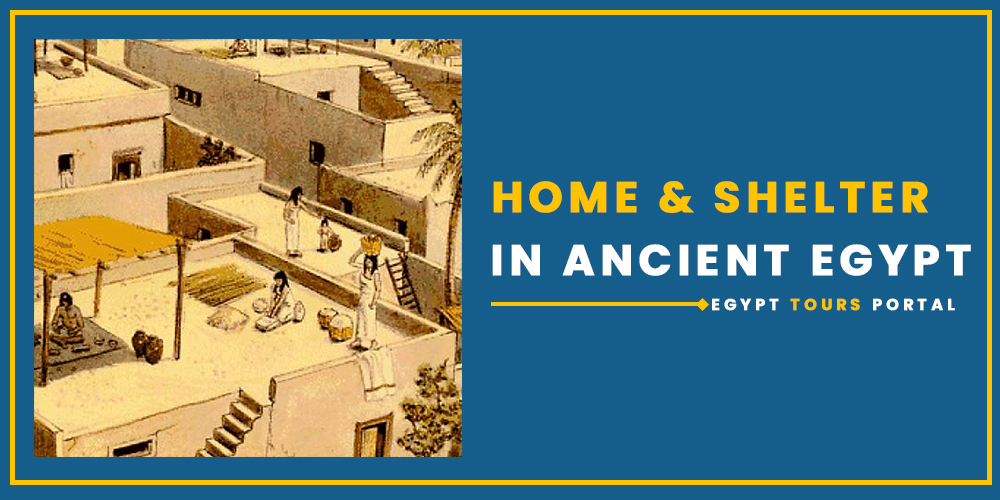
In the beginning, ancient Egyptians built their own ancient Egyptian houses, temples, and tombs out of adobe, which are mud-bricks made of sun-dried mud. This material was fast and cheap, and almost all the mud bricks crumbled and dissolved. The houses were filled with decorations, amulets, and ancient religious artifacts.
The houses were cool on the inside and had a flat roof, so in the summertime, people could sleep on top of them. Most of the townhomes were divided into two floors, the first floor was reserved for the reception, and the top floor is reserved as private housing for the residents. Houses were built around courtyards, and all the cooking was done outside in the courtyard. All of the noblemen's houses were larger as they had three areas while the rest of the farmers lived in modest houses.
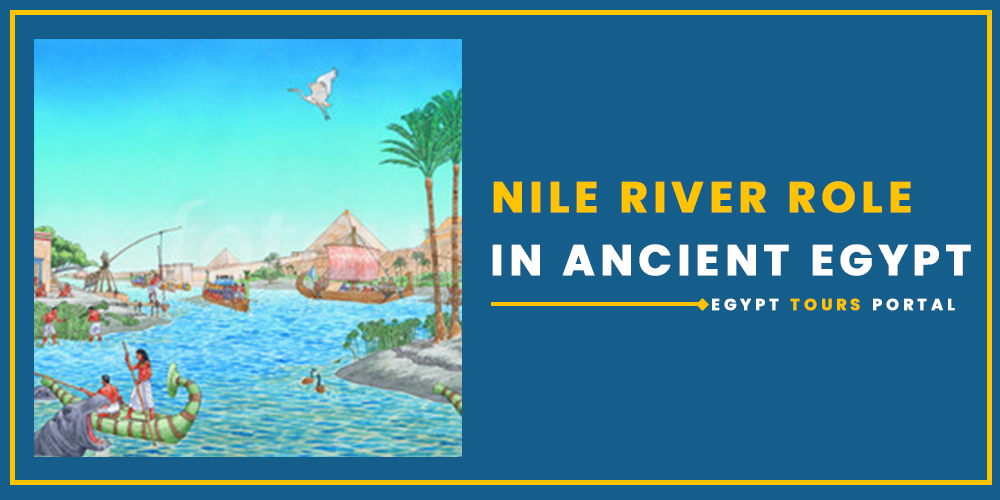
The Nile represents the bloodstream and the life force of Egypt. It was considered to be the main form of transportation for goods, materials, and people. The Nile was a line of communication between Upper and Lower Egypt and provided a very fertile land to the ancient Egyptians so they could grow all that they needed, like wheat, barley, flowers like papyrus, which was turned into paper, rope, baskets, and other crops.
The Nile also played an important role as a religious entity because of the public view that found it as a gift from gods like the “God Sobek” who is credited with creating the Nile. You can cruise the Nile River on board a magical nile river cruise to witness the most famous landmarks in Egypt.
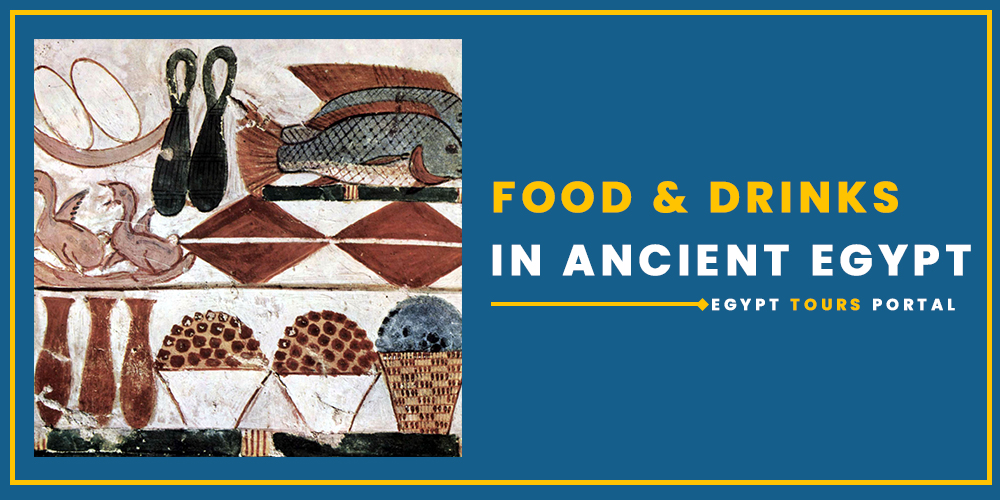
Finding water and food in life in ancient Egypt was not that hard, as the soil was very fertile, the Nile was filled with nutritious water, and that’s why many crops like wheat and barley were easily found. The bread was considered a source of carbohydrates and was seasoned with honey, herbs, fruits, and sesame seeds.
Their diet was mainly vegetarian as they lived on a combination of wheat and vegetables, and fish acted as their main source of protein, as the meat was more expensive and difficult to come by, and could only be found at the houses of the elite and the wealthy. A lot of the ancient Egyptian animals were ritually slaughtered and extremely hard to keep the meat fresh within the Egyptian climate. Beer was also the main drink of life in ancient Egypt and was consumed at every meal. Wine also was found at the tables of the wealthy noblemen.
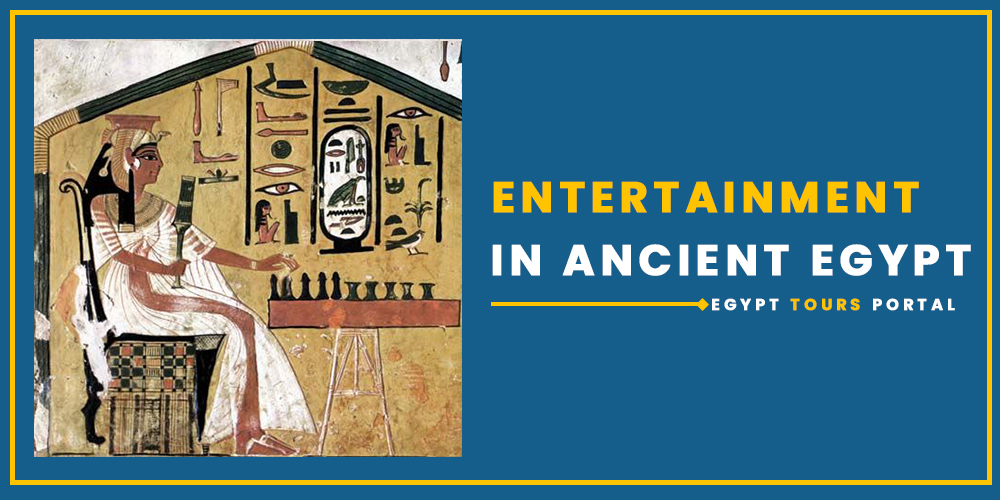
The ancient Egyptians tried to live their life to the fullest as they engaged in everything from hunting crocodiles and hippopotamuses and playing board games like Senet and Hound & Jackals, and they even made toys for children in the shapes of animals. There were also a lot of sports that included athletics in the early versions of teams such as swimming, earth hockey, handball, wrestling, rowing, archery, gymnastics, and many water sports like water jouster which was a form of sea battle played in small boats on the Nile River.
The wealthy and noblemen of ancient Egypt would throw extravagant parties filled with the finest foods and beverages. Music and dancing also were found very common in ancient Egyptian culture and were considered to be art forms.
Explore the rich entertainment of the ancient Egyptian civilization
Read More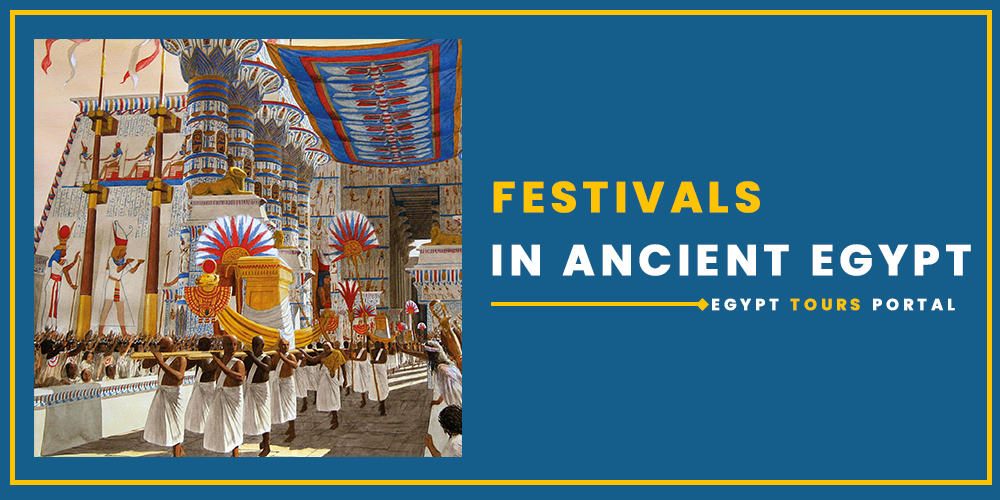
All the festivals in the life of ancient Egypt had a unique feeling depending on the nature of the events. Most of the festivals in the life of ancient Egypt had a religious nature as all the Egyptians celebrated god's birthday. The religious festivals were held in conjunction with the lunar calendar in temples like the festival of the valley in Luxor in honor of the god Amun, the feast of Hathor at Dendera, the festival of the goddess Isis at “Busiris“, and the celebration of Bastet at “Busastis“. There were also other kinds of festivals like individual birthdays, anniversaries of the great deeds of the king, funerals, and house-wearing events.
There were also other festivals that had a unique religious nature like the “WepetRenpet” which marked the beginning of the year in July at the annual Nile flooding, “The Sea Festival” was held in the third reign of the pharaoh’s reign to celebrate his kingship and “The Festival of Khoiak” which honored Osiris death and revival. The Egyptians would indulge themselves in every kind of entertainment in these festivals despite the fact that self-indulgence wasn’t appropriate at every gathering. You can read more also about festivals and public holidays in Egypt these days.

The ancient Egyptians' clothes were made from linen, which is a light and cool fabric woven from cotton. Both men and women wore the same material in the shape of linen kilts. Most women are dressed in plain-sleeved dresses. Servants and lower-class women are often shown wearing a kilt while the royal and the noblewomen are shown wearing fitted dresses from the shoulder to the ankles and the noblemen are seen in skirts and blouses. All the little children in ancient Egypt didn’t wear clothes until the age of ten.
All of the social classes went barefoot to imitate the gods who didn’t need footwear. But when someone was on a long journey or a place where they would hurt or injure their feet, they would wear sandals. The lower class would wear cheap sandals made of woven rushes while the nobles and the rich would wear expansive sandals made of leather or painted wood.
Men, women, and children wore cosmetics like Kohl which was considered to be the most popular type of makeup that helped protect the ancient Egyptians from the sun. The ancient Egyptians like the lower class wore jewelry like rings, pierced ears, necklaces, and amulets while the higher and wealthier classes wore jewelry made of gold, silver, and electrum for both fashion and religious purposes.

The ancient Egyptian medical condition was heavily affected by the religious atmosphere. They used a combination of scientific techniques like observation and diagnosis plus magical rituals such as spells and charms. All of Egypt’s doctors began their training as scribes as they needed to read medical texts to figure out the right cures. Most diseases were thought to be inflicted by the gods as a form of punishment for committing a certain sin, and that’s why they believed that a supernatural presence was responsible.
In order to do their job, they had to read and study a lot of religious literature on surgery, the setting of broken bones, dentistry, and the treatment of various illnesses. The ancient Egyptians gained a great deal of knowledge in the field of anatomy due to the practice of removing human organs and understanding the afflictions and the remedies of the human body.
They cared deeply about their dental hygiene as they developed toothpaste made of eggshells, ox hooves, and ashes, and the toothbrush to keep their teeth healthy and clean of sand and grit, they also invented breath mints to cover their bad morning aroma. They also were very civilized as they took extra care of their hygiene, they would cleanse themselves in the river or a bath at home daily. They didn’t have soap but they used a cleansing cream made of oil, lime, and perfume instead.

Ancient Egyptian mythology had thousands of deities over the centuries. Their religion was polytheistic, as every town and village had its god or goddess. Every deity or religion had its temple, rituals, ceremonies, and other special practices that had a powerful influence on their life. They believed in life after death as the body was preserved in a lifelike form through the mummification process.
They confused magic with science and believed it was only in the power of gods to create or destroy. They had many myths that explained the way of the world and beyond like the creation of the universe, and the afterlife. Most of our information comes from the Book of the Dead as it was written throughout Egypt’s history and contained texts, hymns, formulas, incantations, and magical words to help the dead arrive safely to the underworld to be judged and explain the origin of the ancient Egyptian gods.
Explore more magnificent details about the rituals, beliefs, and customs of the religion of the ancient Egyptians.
Read More
The ancient Egyptians were natural-born explorers and inventors. They made the earliest inventions that we still use today. They were the first to create a writing system in the form of hieroglyphics, which were drawings portraying a story; they used it to keep accurate records of their lives, discoveries, and religious dogma. They also developed a sheet of paper called papyrus, which they created and blackened, which they used in writing and painting, which came in various colors.
The ancient Egyptians used the knowledge of ancient Egyptian astronomy to develop the lunar calendar based on the cycles of the moon and the star Sirius, which we still use to track the days until today. They were the first people to divide days into equal parts, 12 months, 356 days, and 24-hour units through timekeeping devices like obelisks, shadow clocks, water clocks, and sundials. The position of the sun determined the passing of the days and the passing of the night was determined by the rise and fall of the stars.
Their observation of the sun, the night sky, and the stars affected their religion and way of life. The ancient Egyptian geometry and mathematics were used to accurately build pyramids, temples, and other buildings, as well as for record-keeping and business transactions. They also created the ox-drawn plow and an irrigation system using hydraulic engineering principles in order to improve their agriculture. They also worked on developing the best ships through their knowledge of aerodynamics.
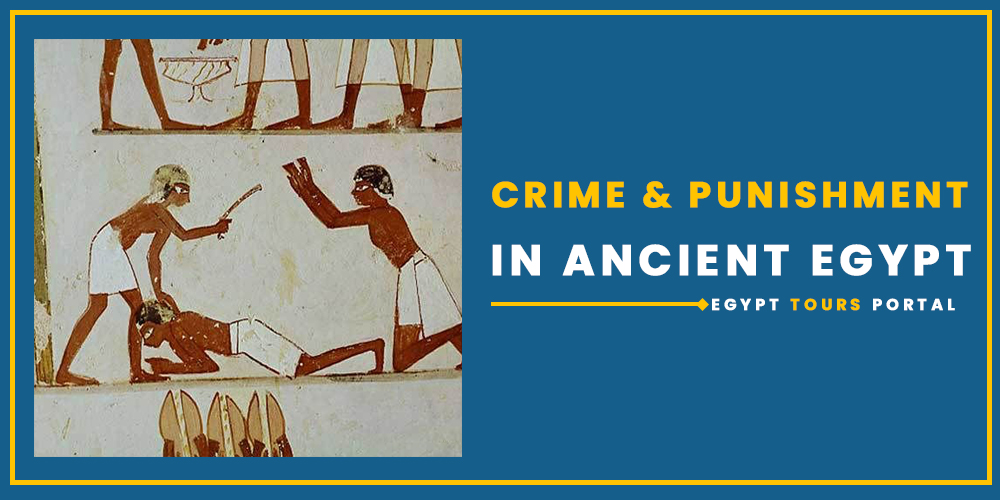
The ancient Egyptian society was a law-abiding community; ancient Egyptian law was swift for anyone who chose to break it. Overseeing Justice and judgment were the responsibility of the vizier, the king’s right hand, and second in command. The local court or “Kenbet” was made up of community leaders who would hear the cases and decide who was guilty and who was innocent. The court could be even held in the marketplace or on the street and there was also an administrative building called the judgment hall which existed in every city.
In the new kingdom, there were no lawyers or appeals, the priests of Amun were the ones who decided the verdict as the people trusted them to give a just hearing and to make the right judgment. Minor offenses were fined but major crimes like rape, assault, murder, or tomb robbing were punished by mutilation, incarceration, forced labor, or even death in some cases. All the convicted felons were used for manual labor in Karnak and were held in the great prison in Thebes. It was also known that the guilty would face a far worse fate in the afterlife.

Education in ancient Egypt was reserved primarily for the upper classes, with children of nobles and the wealthy, who were mostly boys, having access to formal learning, while the majority of society, especially farmers and laborers, were trained in trades or taught within the family. For those privileged enough to receive formal education, the primary focus was on literacy, arithmetic, and religious knowledge, essential skills for scribes, government officials, and priests.
Boys often started their education at a young age, attending schools attached to temples or government institutions, where they learned hieroglyphic writing and studied texts on law, administration, and religious rituals. Girls rarely received formal education unless they came from noble families then they would an education that would equal the boys, though some learned household management and crafts from their mothers. Education in ancient Egypt thus reinforced social hierarchy, equipping students with specialized knowledge that sustained the administrative and religious framework of society.
After reading this article, you can pretty much tell how the ancient Egyptians were very civilized and way ahead of their time. They elevated their daily life and looked for means to improve them for thousands of years. So you can discover more about the ancient Egyptians during your travel experience in Egypt, by checking our breathtaking Egypt tour packages and Nile river cruises.
Private 4 Days Cairo Tour Packages for Australian Travelers 4 days Cairo Egypt Tour ...
Tour Location: Cairo – Giza...
5 Days Cairo and Alexandria Tour Package For Australian Travelers 5 days Cairo and A...
Tour Location: Cairo/Giza/Alexandria...
6 Days Cairo, Luxor & Aswan Tour Package For Australian Travelers 6 days Cairo, ...
Tour Location: Cairo/Giza/Aswan/Luxor...
Amazing 7 Days Cairo and Hurghada Holiday for Australian Travelers 7 Days Cairo &...
Tour Location: Cairo – Giza – Hurgh...
Artists in ancient Egypt recorded details of everyday life to ensure continuity and immortality. They believed depicting daily activities on tomb walls would allow the deceased to continue enjoying these activities in the afterlife. Moreover, these depictions celebrated the ideal Egyptian life and reinforced social roles, showcasing everything from farming and feasting to religious rituals, which symbolized stability and prosperity.
Life expectancy in ancient Egypt was relatively low by today’s standards, typically ranging from 30 to 40 years, with high child mortality rates. Many Egyptians faced challenges from disease, malnutrition, and injuries, though those who survived childhood could sometimes live longer, especially among the upper classes who had better access to food and healthcare.
Life for a pharaoh in ancient Egypt was grand and filled with both privilege and responsibility. Pharaohs were considered divine rulers, regarded as intermediaries between gods and humans. They lived in lavish palaces, had access to fine foods and luxuries, and oversaw vast lands. Their duties included leading religious ceremonies, waging wars, overseeing construction projects, and ensuring the welfare of their people. Every aspect of a pharaoh's life was tied to maintaining Egypt's divine order, known as Ma'at.
The Nile's annual flooding was the lifeline of ancient Egyptian society. The floodwaters deposited nutrient-rich silt on the land, making agriculture possible in an otherwise desert region. This predictable flooding allowed Egyptians to develop a sustainable farming system that supported a growing population and spurred trade. Life in Egypt was deeply connected to the rhythms of the Nile, with their calendar, festivals, and economy structured around its cycles.
Archaeologists study a variety of artifacts and sites to learn about ancient Egyptian life, including tombs, temples, pottery, jewelry, and daily-use items. They examine burial sites to understand beliefs about the afterlife, analyze inscriptions for insights into social and political structure, and study remnants of housing and tools to reconstruct day-to-day life. Excavations of the workers' villages and monumental buildings like the Pyramids offer valuable glimpses into both elite and commoner lifestyles.
Ancient Egyptian artisans left behind detailed artworks, including murals, statues, and carvings, that vividly depict everyday life, religious beliefs, and social hierarchies. Their work provides insight into fashion, family roles, occupations, and celebrations. Through these artistic records, historians understand the values, aesthetics, and routines of ancient Egyptian society, offering a window into a civilization that valued order, beauty, and the afterlife.
Modern life shares several similarities with ancient Egyptian society, including a strong emphasis on family, specialized labor, and advancements in architecture and art. Both societies value education, though access is more universal today. Additionally, just as the Nile was central to Egypt's agriculture, rivers and natural resources continue to be vital to modern civilizations. Lastly, themes of spirituality and community gatherings resonate through both eras, illustrating humanity's enduring social and spiritual needs.
Pharaoh Khufu, known for commissioning the Great Pyramid of Giza, contributed to the prosperity of Egypt through large-scale building projects that employed thousands and strengthened Egypt's architectural and engineering expertise. His reign marked a period of stability and resource consolidation, with efforts to develop administration, trade, and defense. Although often seen as a strict ruler, his projects not only enhanced Egypt’s grandeur but also created jobs and advanced skills that benefited society.
Farmers in ancient Egypt lived modestly and worked hard to support their families and fulfill state quotas. They played a crucial role in society by producing the food that sustained the population and supported the economy. Their lives followed the seasonal cycles of the Nile, sowing, harvesting, and waiting for the floodwaters to renew the soil. While they led simple lives, farmers were respected for their role in maintaining Egypt's prosperity, and they participated in festivals and religious practices that enriched their cultural lives.
The entire country of Egypt deserve to be explored with its every heavenly detail but there are places that must be seen before any other such as the breathtaking Hurghada's red sea, The wonders of Cairo the pyramids of Giza, the great sphinx, the Egyptian Museum, Khan El Khalili Bazaar, the wonders of Luxor like Valley of the Kings, Karnak & Hatshepsut temple and the wonders of Aswan such as Abu Simbel temples, Philea temple, Unfinished obelisk and The Wonders of Alexandria like Qaitbat Citadel, Pompey's Pillar and Alexandria Library. Read more about the best places to visit in Egypt.
If you want to apply for a Visa On Arrival that lasts for 30 days then you should be one of the eligible countries, have a valid passport with at least 6 months remaining and pay 25$ USD in cash, as for the E-Visa for 30 day you should have a valid passport for at least 8 months, complete the online application, pay the e-visa fee then print the e-visa to later be presented to the airport border guard. You could also be one of the lucky ones who can obtain a free visa for 90 days. Read more about Egypt travel visa.
Egypt has a variety of delicious cuisines but we recommend “Ful & Ta’meya (Fava Beans and Falafel)”, Mulukhiya, “Koshary”, a traditional Egyptian pasta dish, and Kebab & Kofta, the Egyptian traditional meat dish.
The best time to travel to Egypt is during the winter from September to April as the climate becomes a little tropical accompanied by a magical atmosphere of warm weather with a winter breeze. You will be notified in the week of your trip if the Climate is unsafe and if any changes have been made.
You should pack everything you could ever need in a small bag so you could move easily between your destinations.
We have been creating the finest vacations for more than 20 years around the most majestic destinations in Egypt. Our staff consists of the best operators, guides and drivers who dedicate all of their time & effort to make you have the perfect vacation. All of our tours are customized by Travel, Financial & Time consultants to fit your every possible need during your vacation. It doesn't go without saying that your safety and comfort are our main priority and all of our resources will be directed to provide the finest atmosphere until you return home.
You will feel safe in Egypt as the current atmosphere of the country is quite peaceful after the government took powerful measures like restructuring the entire tourist police to include all the important and tourist attractions in Egypt. Read more about is it safe to travel to Egypt.
Wear whatever feels right and comfortable. It is advised to wear something light and comfortable footwear like a closed-toe shoe to sustain the terrain of Egypt. Put on sun block during your time in Egypt in the summer to protect yourself from the sun.
The best activity is by far boarding a Nile Cruise between Luxor and Aswan or Vise Versa. Witness the beauty of Egypt from a hot balloon or a plane and try all the delicious Egyptian cuisines and drinks plus shopping in old Cairo. Explore the allure and wonders of the red sea in the magical city resorts of Egypt like Hurghada and many more by diving and snorkeling in the marine life or Hurghada. Behold the mesmerizing western desert by a safari trip under the heavenly Egyptian skies.
There are a lot of public holidays in Egypt too many to count either religious or nation, the most important festivals are the holy month of Ramadan which ends with Eid Al Fitr, Christmas and new years eve. Read more about festivals & publich holidays in Egypt.
Egypt is considered to be one of the most liberal Islamic countries but it has become a little bit conservative in the last couple of decades so it is advised to avoid showing your chest, shoulders or legs below the knees.
Arabic is the official language and Most Egyptians, who live in the cities, speak or understand English or at least some English words or phrases. Fewer Egyptians can speak French, Italian, Spanish, and German. Professional tour guides, who work in the tourism sector, are equipped to handle visitors who cannot speak Arabic and they will speak enough English and other languages to fulfill the needs of all our clients.
The fastest way is a car, of course, a taxi. If you are in Cairo ride a white taxi to move faster or you could board the fastest way of transportation in Egypt metro if the roads are in rush hour.
The temperature in Egypt ranges from 37c to 14 c. Summer in Egypt is somehow hot but sometimes it becomes cold at night and winter is cool and mild. The average of low temperatures vary from 9.5 °C in the wintertime to 23 °C in the summertime and the average high temperatures vary from 17 °C in the wintertime to 32 °C in the summertime. The temperature is moderate all along the coasts.
It is the home of everything a traveler might be looking for from amazing historical sites dating to more than 4000 years to enchanting city resorts & beaches. You will live the vacation you deserve as Egypt has everything you could possibly imagine.









